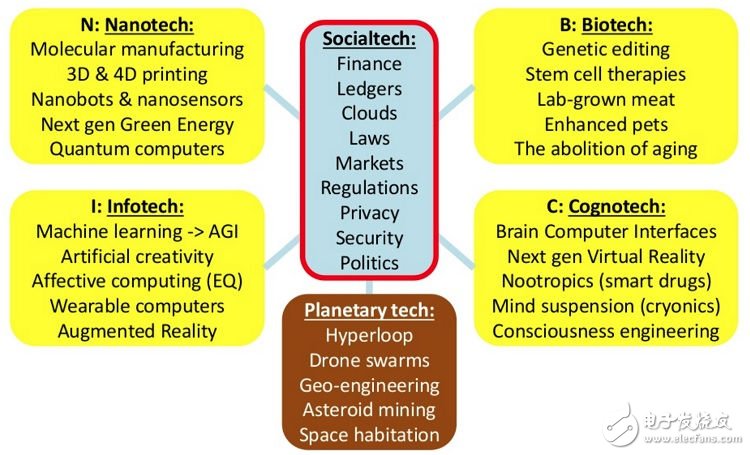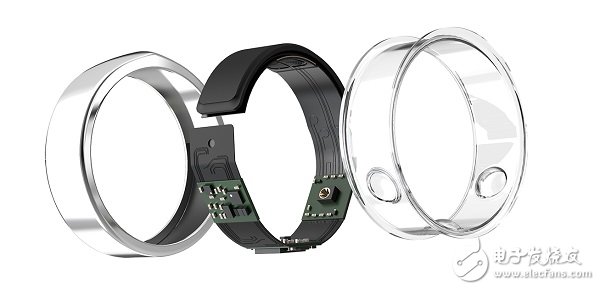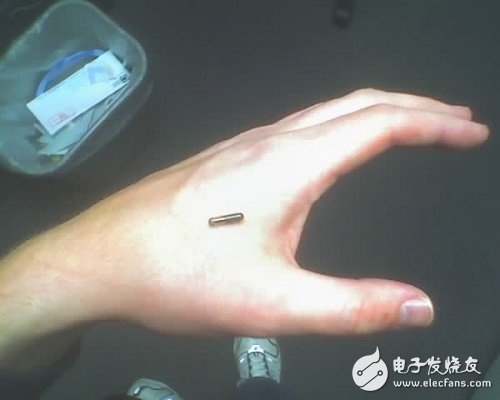Wearable technology is almost entirely the world of fitness trackers and smart watches. In the future, what more cool applications will emerge?
The MIT Media Lab has released AlterEgo, the latest wearable artificial intelligence (AI) device with "reading mind", a non-invasive wearable system that people don't need. When you speak, you can talk to the machine, AI assistant, service, and others in a natural language. The goal is to combine computing, the Internet, and AI as a "second self" into human personality, and to enhance human cognition and abilities, in combination with humans and computers.
Just a few weeks ago, I participated in a discussion on "The Future of Smart Devices in 2025" at Cambridge Wireless. Futurist David Wood (who co-founded Symbian in 1998) expressed his views on the expected mobile devices in 2025. In particular, he described these so-called "smart body enhancers" (SHA) as the next big thing beyond smart phones. In particular, he pointed out that AI will become more and more intelligent, and ultimately "will understand and fill the gap between the words we use when we speak."
He puts future developments in the context of the fourth industrial revolution. He said that in addition to smart phones, next-generation products will incorporate hardware-based nanotechnology and biotechnology, as well as software-based Information technology and cognitive technology.

Wood said that these SHA devices will observe what we do by listening to what we and we are listening to, observing us and what we see and feeling our feelings, in a more sensitive and accurate way than our senses. everything of. These must use voice and voice recognition, computer vision, embedded sensor information in the environment, communication between Internet of Things (IoT) systems, situational knowledge, and computer common sense.
Tom Bennett, head of network services and devices at EE, a subsidiary of BT Group BT, further explores the future, saying that he hopes to see "bendable" technology in future devices (such as the curlable screen developed by Samsung in 2011). This time is expected to be "after 18 months."
But the most important thing is the power consumption problem, Bennett said: "Many technologies have to use batteries, so until you find the right solution, you can create a new product design. And once you adopt AI, you will need More processors to meet their functional requirements."
He added that principles and regulations are also important, but from an operator's perspective, security, identity and protection are key challenges.
Healthcare, AI and power management
Healthcare, AI and power management are also the themes of the recent Wearable Technology Show. OTIcon, a Danish hearing aid supplier, introduced how current hearing aids can become powerful processors, not only for hearing aids, but also for overall brain health. OTIcon product manager Michael Porsbo said: "This generation of hearing aids uses 11 hard-coded arrays of DSP processors that provide parallel computing power and can image the entire soundscape 360 ​​degrees at 100 times per second. Eight of these DSPs are used. Processing sound, 2 for communication (near field magnetic induction and an RF chip)."

OTIcon Showcases Opn Hearing Aids Supporting Rechargeable Batteries (Source: OTIcon)
Porsbo added, “Now hearing aids are not only used when amplifying sound or hearing loss. It also gives us a better understanding of how the brain works. That's why we need AI to understand the huge data sets we generate and use them. Learn more about a person's health."
As for the next step, he said: "We are always looking to improve the audio quality, and through the collected data, we will explore which sensors should be integrated into the hearing aids, such as EEG."
Hannu Kinnunen, chief scientist of the Finnish wearable technology company Oura Health, also stressed that power management design is critical for its infrared PPG sensor. PPG refers to photoplethysmography, a simple optical technique used to detect changes in blood flow in blood vessels to provide valuable information about the cardiovascular system.
The company will begin shipping its latest version of the Oura Ring, which measures some of the body's physiological signals—such as ECG, resting heart rate (RHR), heart rate interval (IBI), heart rate variability (HRV), respiratory rate, and respiratory changes. , as well as sleep tracking to inform lifestyle choices. Oura Ring includes a dual-core ARM Cortex-based microcontroller, proprietary pulse waveform and pulse amplitude change detection infrared PPG sensor, body temperature sensor and 3D accelerometer and gyroscope.

Oura Ring Wisdom Ring can be used to track sleep and activity (Source: Oura Health)
Kinnunen said: "We have succeeded in reducing the size of the chip by a factor of three and stepping into a smaller Battery to provide 10 times more computing power and improved signal quality."
We also saw new product shape trends and future soft screens on the show floor. Raj Partheban, founder of WITGrip, a startup that specializes in the development of wrist-worn technology IP, said that smart phones cannot provide the disruptive technology needed to interact directly with smart homes/smart cities.
Partheban said: “The manufacturers are more focused on maintaining existing technologies, such as developing new features for existing smart phones that are used to control home electronics. However, this means that the phone has only become a more Complex remotes - not replaced by existing solutions."
The company said that although the existence of wearable technology has promoted many activities in smart homes – from inductive access control to control of lighting and heating, its interactivity is still limited because the devices are connected, but not Connect with the user. The current smart phone technology has the same problems as the remote control solution.
Adi Chhabra, senior product manager for Vodafone AI, also said that the future of wearable devices is shifting from screen interaction to surface interaction. He said: "Any screen or surface can be your interface for enabling voice, touch or gesture functions. Google Glass is the first generation, but not the final answer to a wearable device. However, it also It gives us a concept of how this field will develop in 15 years."
How far can wear technology go?
Early wearable devices were synonymous with smart watches and fitness trackers. But as more and more applications evolve, some killer applications are becoming clearer. The current trend is moving towards health applications, not only as simple fitness trackers, but also in more complex healthcare areas, as discussed above.
Recent market research does support this. According to data from Juniper Research, although the current market is dominated by smart watches and fitness trackers, its growth rate will slow down, and shipments of these devices are expected to reach approximately 190 million units by 2020. The research report also pointed out that as device types expand and procurement cycles prolong, industry companies will begin to focus on software and data services to maintain their revenues, and the largest market for these subscription services is healthcare.
So how far can wear technology and AI go in the healthcare field? A paper published last month in the Scientific Reports describes how to learn biological age from biomedical data through deep learning. Researchers at the Moscow Institute of Physics and Technology (MIPT) and the biotechnology company GERO have confirmed that using only one week of physical activity data from wearable devices can be used to generate aging and debilitating digital biological pointers. This groundbreaking demonstration opens up the emerging potential of combined wearable sensors and AI technology for continuous health risk monitoring and real-time feedback of data to life and health insurance, healthcare and sports fitness providers.
Therefore, for the time being, the fitness tracker is not mentioned, and the future development direction of wearable technology is in the field of health care. Today, we have seen examples of companies such as Epicentre in Sweden and Three Square Market in Wisconsin, USA, starting to implant chips in their hands, which may become the norm in just a few years.

DC Cooling Products includes DC Solar fridge,DC Solar Freezer,DC Solar Conditioner,DC Solar Fan and other solar energy electric items.
Dc Powered Refrigerator,Dc Mini Fridge,Full Dc Inverter Aircon,Dc Ceiling Fan With Light
NANTONG RONGCHANG IMPORT&EXPORT CO.,LTD , https://www.ergsolarcn.com